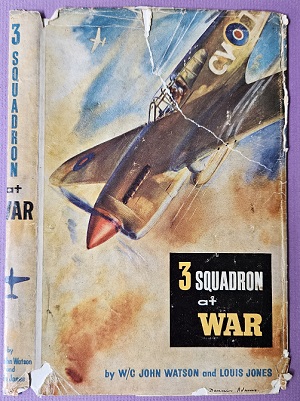Description
Title: Brave and True – A History of 466 RAAF Halifax Squadron whilst based in Yorkshire, England as part of Four Group, Royal Air Force, including a short history of 462 RAAF Halifax Squadron from August, 1944
Author: Silverstone, Alby and Parker, Stan
Condition: Very Good
Edition: 1st Edition
Publication Date: 1992
ISBN: 0646120468
Cover: Soft Cover without Dust Jacket – 139 pages
Comments: The history of No. 466 Squadron. Now a very scarce and highly desirable RAAF Squadron history book.
No. 466 Squadron, Royal Australian Air Force was formed at Driffield in the United Kingdom on 10 October 1942. Although intended as an Australian squadron under Article XV of the Empire Air Training Scheme, the majority of its personnel were originally British. The replacement of these men with Australians was a gradual process and it was only towards the end of the war that the squadron gained a dominant Australian character.
The squadron relocated to Leconfield on 27 December 1942. Equipped with Vickers Wellington medium bombers, and forming part of 4 Group, Bomber Command, it flew its first operational mission on 13 January 1943. This mission involved laying mines along Germany’s North Sea coast, an activity that would become one of the mainstays of the squadron’s activities in ensuing months. The squadron’s primary operational focus, however, was the strategic bombing of Germany.
At the end of August 1943 the squadron withdrew from operations to re-equip with Handley Page Halifax heavy bombers, and did not return until 1 December 1943. A mixture of mine-laying and nocturnal raids over Europe continued in early 1944 until the squadron, like much of bomber command, was directed against military targets in Normandy in the lead-up to the D-Day landings. On 3 June, the squadron returned to Driffield. Operations in support of the ground forces, and against V1 flying bomb and V2 rocket launch sites, continued through July and into August. The emphasis of the squadron’s operations progressively returned to the strategic bombing offensive against Germany, and occasional missions in support of ground operations, such as those mounted against the island of Walcheren in late October 1944.
The squadron’s operations over Germany continued into 1945. With the strength of the German air force in rapid decline, an increasing number of missions were flown in daylight. 466 Squadron mounted its last bombing raid on ANZAC Day 1945 against the coastal defences on the German North Sea island of Wangerooge. On 7 May the squadron was transferred to Transport Command but never fully converted to the transport role. It relocated to Bassingbourn on 8 September and began re-equipping with Consolidated Liberator heavy bombers. This process was not completed when the squadron disbanded on 26 October 1945.
Between December 1942 and May 1945, 466 Squadron flew 3,326 sorties against 269 separate targets. It dropped 8,804 tons of bombs and laid 442 tons of mines. In the course of these operations 81 aircraft were lost.
Includes – honours and awards, lists aircrew members, profile of squadron commanders.
Previous owner’s label on the inside of the front cover.





